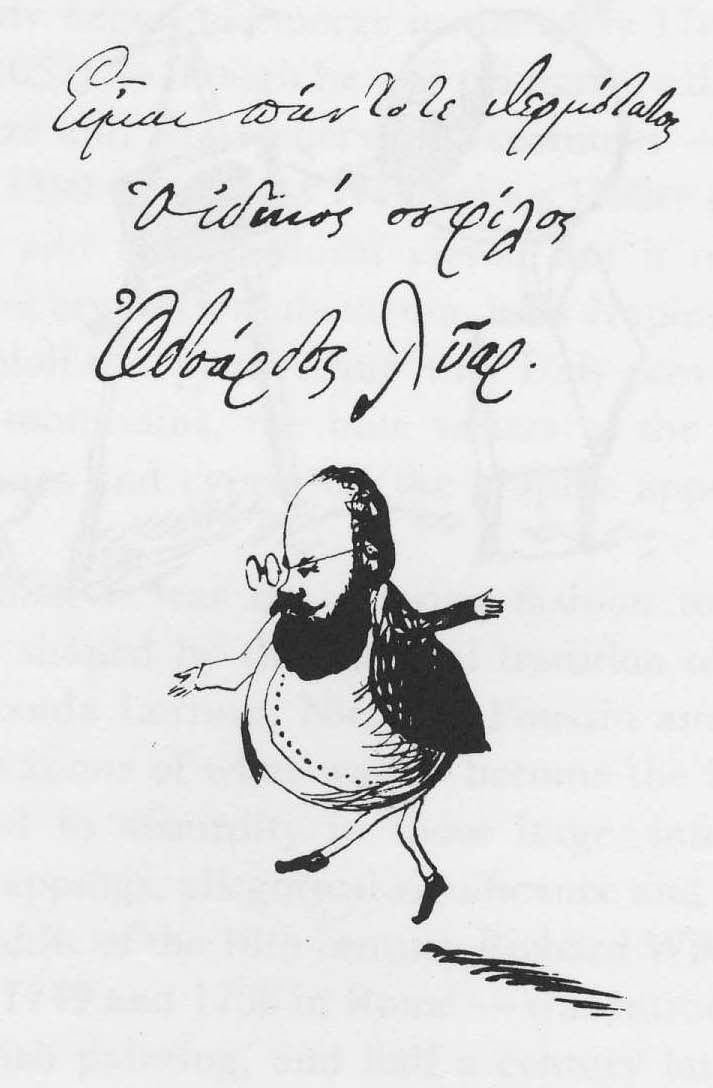
Edward Lear
1812-1888
Always your warmest friend, Edward Lear.
There was an old man of Corfu,
Who never knew what he should do . . .
Edward Lear was born in 1812 in a small village on the outskirts of London, the 20th out of 21 children, though many of them died in infancy. His father had made good as a stockbroker in the city, but when Lear was four years old his father ran into debt. To ease the strain on his mother, he was put in the charge of his eldest sister, Ann, who was 22 years older than himself. It was shortly after this that he had his first attack of epilepsy, an illness that never left him and that he was to call ‘the demon’, and which later were followed by acute attacks of depression, what Lear was to call ‘the Morbids’. These afflictions were a deep source of sorrow and suffering for him throughout his life.
Lear’s education was virtually the sole responsibility of his sister Ann. Except for a short spell when he was 11, he had no formal education. Years later, when he was 47, he expresses enormous thankfulness for this: ‘I am almost thanking God’, he writes, ‘that I was never educated, for it seems to me that 999 [out of a 1000] of those who are so, expensively and laboriously, have lost all before they arrive at my age — and remain like Swift’s Stulbrugge — out and dry for life, making no use of their earlier-gained treasures; whereas I seem to be on the threshold of knowledge . . .’.
At the age of 15 he had to start earning a living. He began doing, he reports, ‘uncommon queer shop-sketches — selling them for prices varying from ninepence to four shillings: colouring prints, screens, fans; awhile making morbid disease drawings for hospitals and certain doctors of physic’. He also taught drawing, and then he graduated to painting birds. In 1930, when 18, he was given permission to draw parrots in the newly-founded Zoological Gardens in Regent's Park. The result of this enterprise was his first book, Illustrations to the Family of Psittacidae, or Parrots, published in 12 parts. When the final part was published in 1832 he was just 20 years old, and his reputation as one of the most accomplished craftsmen among early lithographers was made.
This achievement led to him being commissioned by Lord Stanley, heir to the 12th Earl of Derby, to stay at the family seat, Knowsley Hall, outside Liverpool, and to draw the animals in his private menagerie, famous throughout Europe. Lear was to reside at Knowsley for the next five years, painting the animals, working on other bird books, composing for the delight of the Earl’s children and grandchildren many of the limericks that were to go into his first Book of Nonsense, published some ten years later. But his eyesight was failing, the northern climate aggravated his health, and having decided to seek out new pastures, in the summer of 1837 he set out for Rome.
Except for one long stay in England between 1849 and 1853, and many short visits there, he was to spend the rest of his life abroad, dedicated to the new career he had chosen, that of a Topographical Landscape Painter. He traveled extensively throughout Europe and even as far as India, and often in extreme discomfort. Everywhere he went he painted his pictures, sketched his sketches, wrote his letters and journals, moving among the English upper class society to which he had been first introduced at Knowsley. He never married. Until the last years of his life he had no home, not even a fixed place of abode, Corfu being the nearest he got to one. Only after 1871 did he have his own house, at San Remo in northern Italy, where he died on 29th January 1888, a few months before his 76th birthday.
These biographical notes have been taken from the Introduction to The Corfu Years.
Texts & References on this site
- Edward Lear:The Corfu Years: A Chronicle presented through his Letters and Journals. Further information about Lear, with special reference to his travels in Crete, is to be found in the Introduction to The Cretan Journal.
- Edward Lear: The Cretan Journal